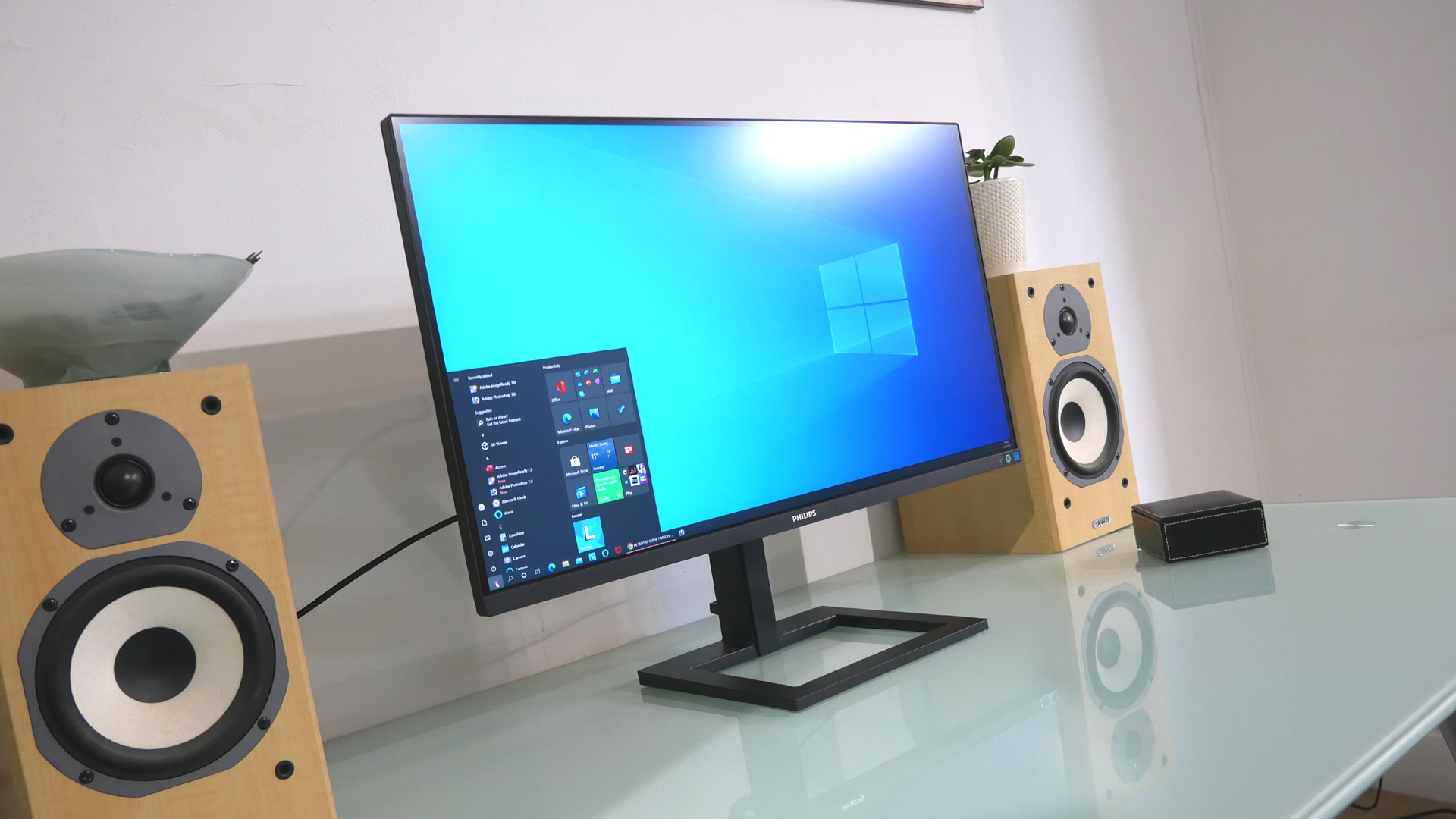TechRadar Verdict
An intriguing alternative to the 27-inch 4K IPS masses, but the panel quality doesn’t quite deliver on the spec-sheet promise.
Pros
- +
Lots of 4K monitor for the money
- +
Fairly wide color coverage
- +
Slim bezels and neat styling
Cons
- -
Not terribly bright
- -
No USB-C connectivity
Why you can trust TechRadar
After an affordable 4K monitor? Then the 27-inch form factor is the current go-to, with prices dipping under £300 / $300 depending on panel technology and specification. But it’s not your only option.
Overall: 4
Design: 4
Features: 4
Performance: 3.5
Usability: 3.5
Value: 5
The new 28-inch Philips 288E2UAE dumps that particular convention and serves up an extra inch at a pretty appealing price point, currently below £300 in the UK. What’s more, that size uptick hasn’t come at the cost of panel tech. This is an IPS monitor with a true 8-bit panel and what Philips claims is wide color coverage.
You also get extras like FreeSync support, a USB 3.2 hub and Philips’ Multiview picture-in-picture tech. What isn’t included, perhaps unsurprisingly at this price point, is USB-C connectivity. That’s a pity in terms of simplicity of connectivity. But then, USB-C typically comes at quite a premium, especially when combined with 4K.
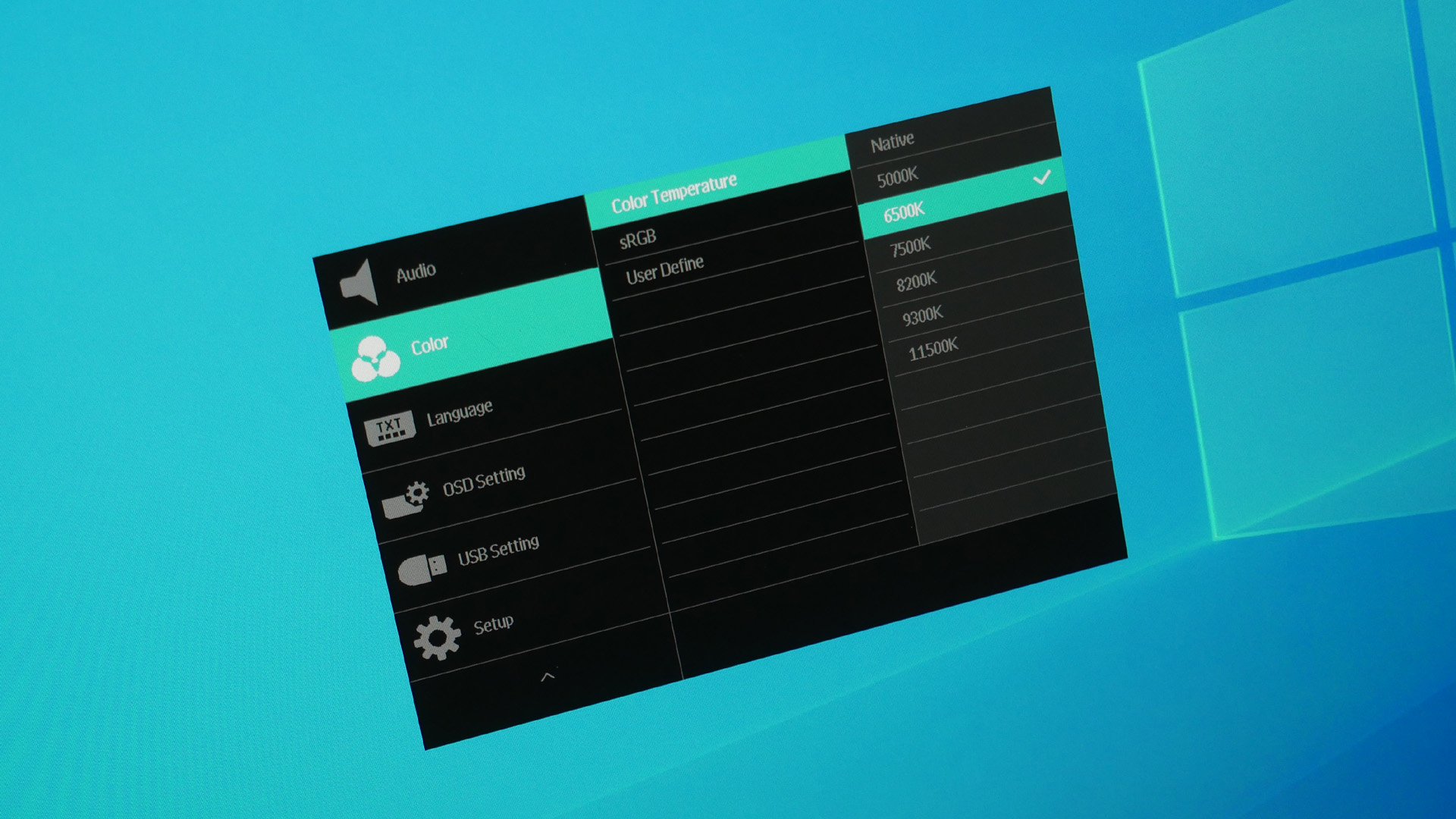
Price and availability
Clocking in at £287 in the UK, the Philips 288E2UAE offers conspicuous value for a 4K monitor based on a wide-gamut IPS panel. It does lack some features of more expensive alternatives, but for the money it’s a lot of monitor. The Philips 288E2UAE isn’t currently available in the US, but the almost identical Philips 288E2E is. Pricing for the 288E2E in the US has yet to emerge, but we’d expect it to come in well under $300 and perhaps near $250, making it a great value option.
Design and features
Aesthetically, the Philips 288E2UAE is all business, sober suited as it is all in black with minimalist styling and slim bezels on three sides of its 28-inch 4K IPS panel. It sits on a crisp and compact stand which offers height and tilt adjustability, which are the two most important planes.
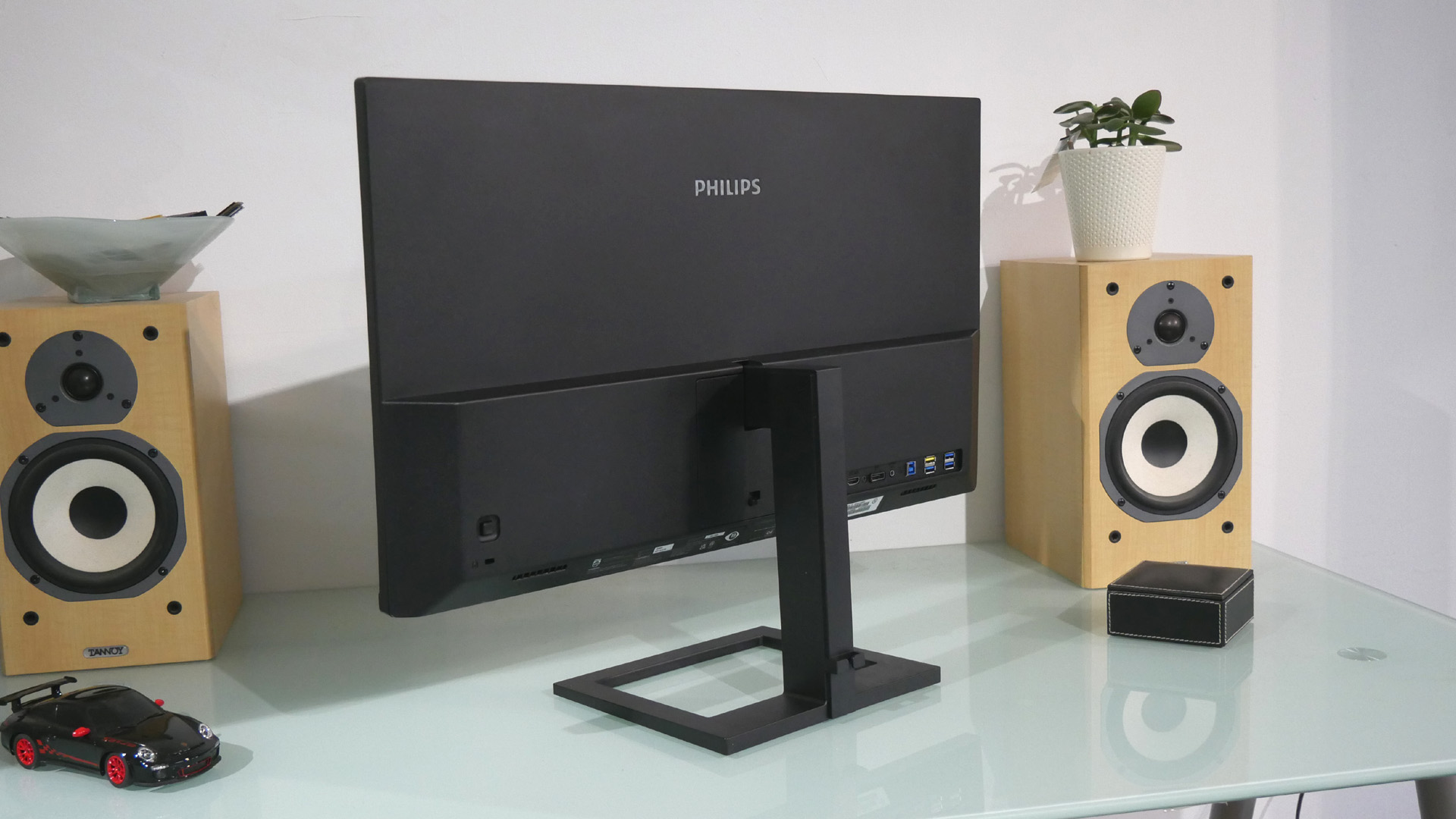
Panel size 28-inch
Panel type IPS
Resolution 3,840 x 2,160
Brightness 300cd/m2
Contrast 1000:1
Pixel response 4ms
Color coverage 119% sRGB
Refresh rate 60Hz
Vesa 100mm x 100mm
Inputs DisplayPort 1.2, HDMI 2.0
Those slim bezels make for a compact and contemporary display. However, the combination of an external power brick and the lack of USB-C connectivity mean that the Philips 288E2UAE and its 288E2E US cousin aren’t the best choice for clean installations with minimal cable clutter.
Speaking of connectivity, the 288E2UAE’s ports are unusual in that the sockets are mounted flat on the rear of the panel rather than somewhere along the bottom of the enclosure and pointing downwards. The upside of the 288E2UAE’s approach? It’s much easier to see the sockets and connect cables.
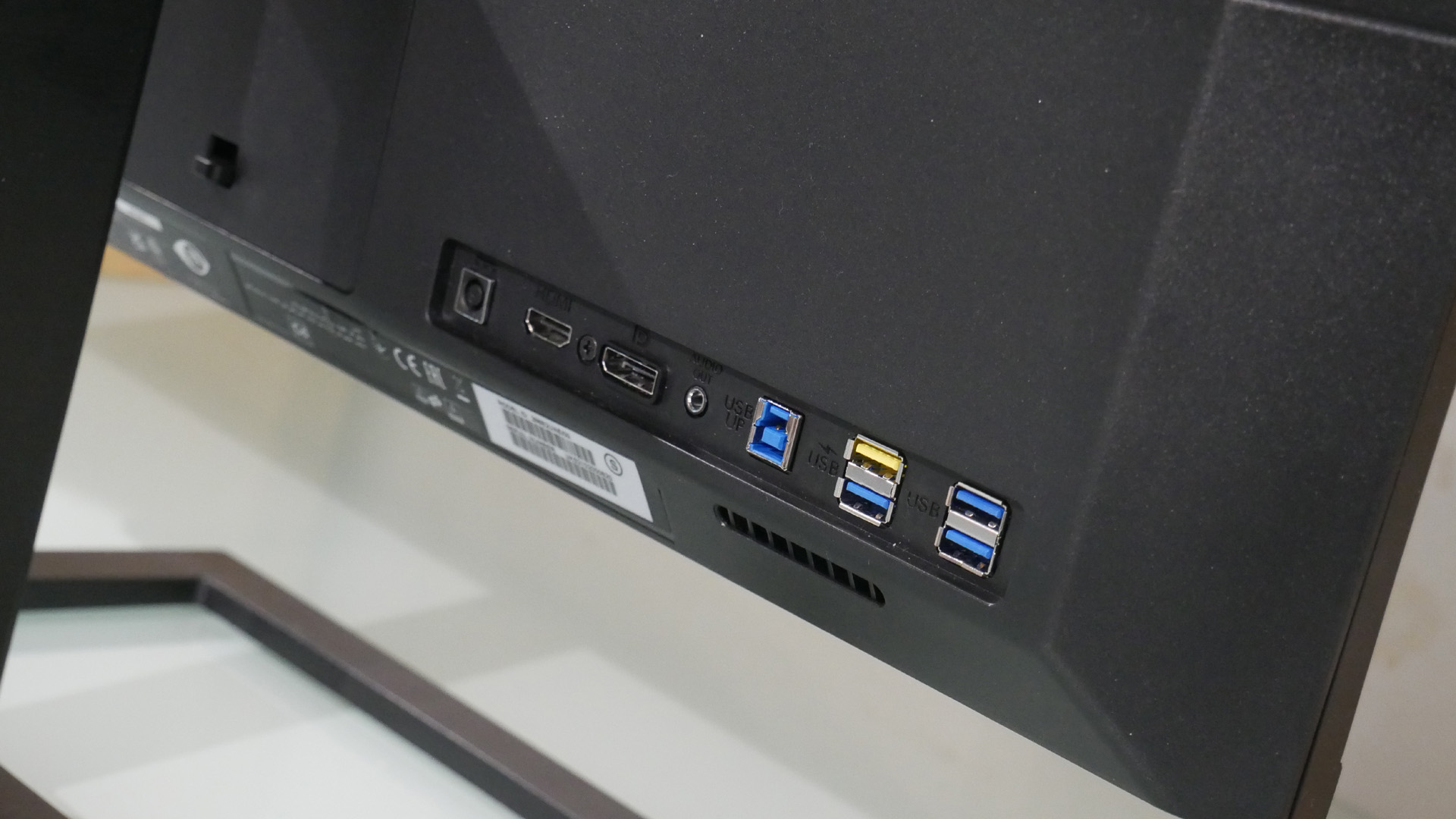
As for actual line up of sockets, there’s DisplayPort, HDMI and a USB 3.2 hub. Note the latter does not entail USB Type-C. So, there’s no single-cable connectivity for driving the display and charging your laptop.
Further notable features include FreeSync support, which will please occasional gamers, and Philips MultiView tech. That allows users to display both DisplayPort and HDMI inputs on screen in parallel.
Performance
Wondering about the impact of the Philips 288E2UAE’s 28-inch diagonal compared to the 27-inch panels that are more typical at this price point? It probably makes running at 125 percent rather than 150 percent scaling in Windows a little more ergonomic, which in turn serves up a bit more usable desktop real estate.
As for detail and sharpness, that 3,840 by 2,160 4K pixel grid still makes for pretty high density (157PPI, since you asked) and so, nice sharp fonts and plenty of precision.
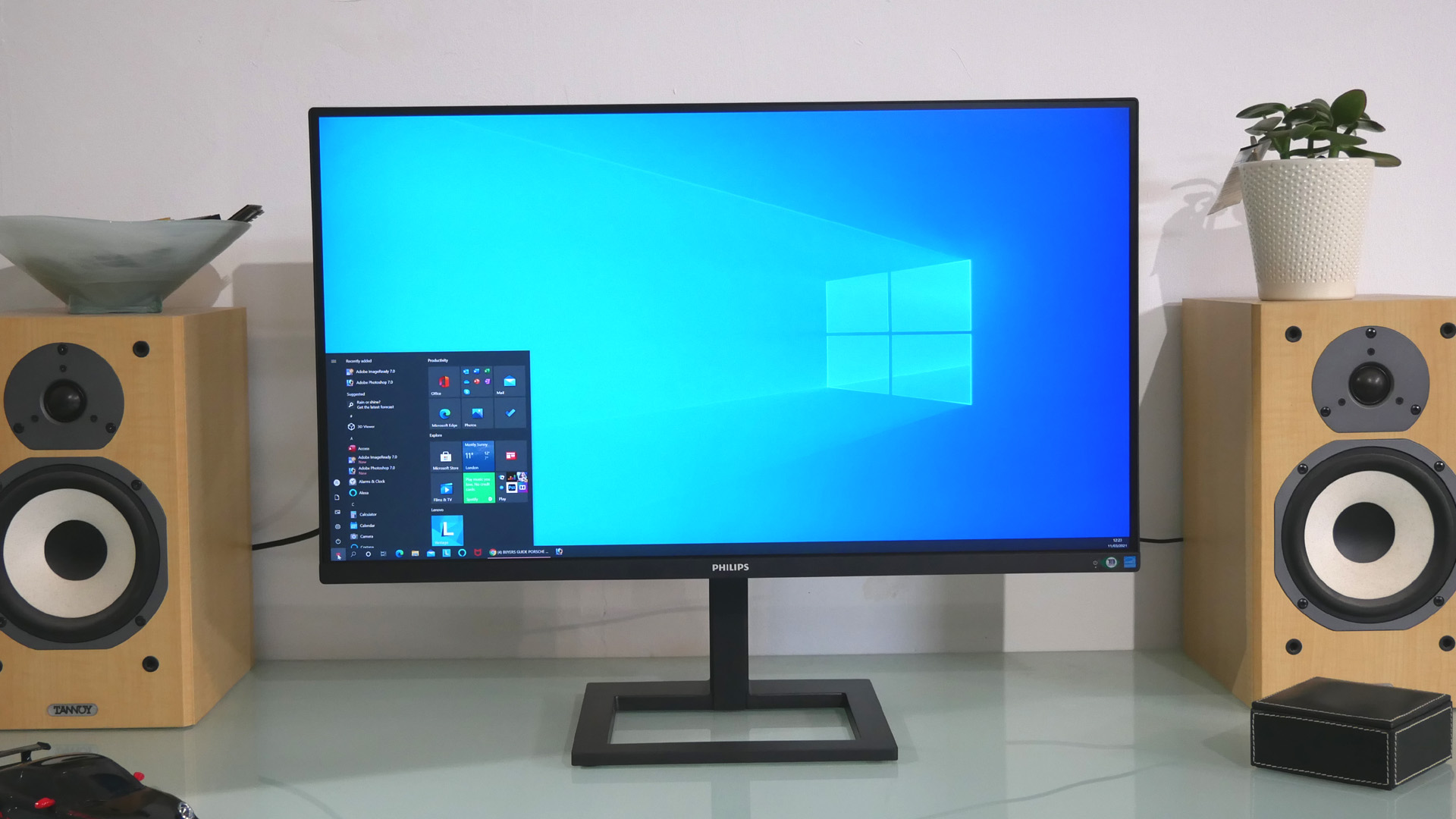
What isn’t quite so impressive is the basic quality of the IPS panel. On paper, it’s pretty high spec. It’s an 8-bit panel with 10-bit color depth courtesy of dithering. It’s also good for 117 percent of the sRGB gamut and 90 percent of DCI-P3 (note that the only gamut preset available in the rather limited OSD is sRGB).
Those are decent numbers, but the subjective experience doesn’t entirely deliver. Philips rates the 288E2UAE at a modest 300cd/m2, but even that seems optimistic when you view the slightly dull overall panel vibrancy. Much will come down to personal preference when it comes to brightness levels. But if you work in an environment with lots of ambient light or just prefer a really punchy panel, this probably isn’t the monitor for you.
Likewise, even if you do prefer to run screens at the circa 200cd/m2 that most experts recommend for long term visual ergonomics, the 288E2UAE’s still has a very slightly dull and dirty look, especially in white tones. There’s also a little compression visible in black and white tones using test images.
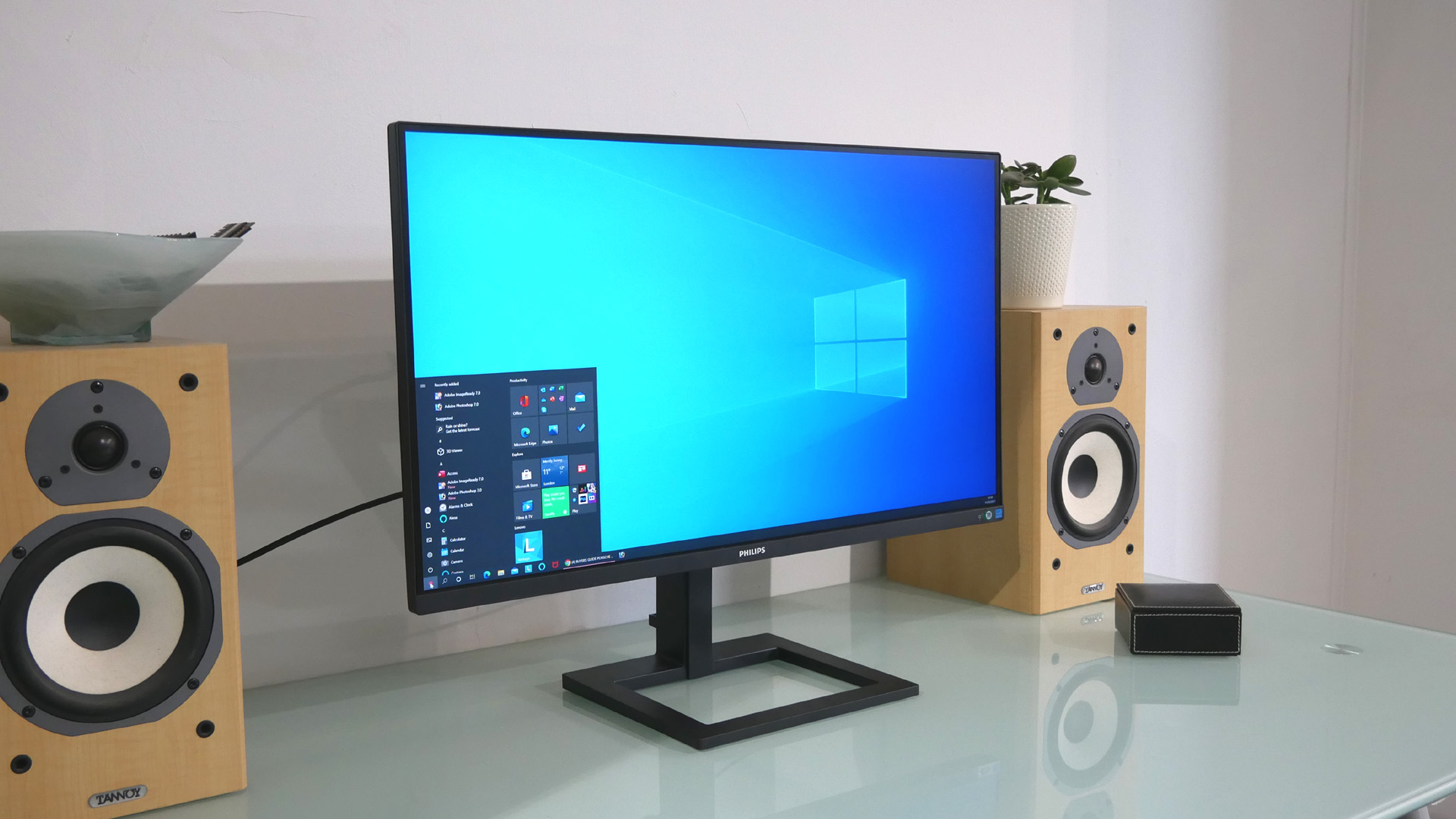
None of these are major flaws. But they are just a little disappointing given the on-paper specifications. Those issues aside, this is a reasonably well calibrated panel with no obvious color imbalances and excellent viewing angles.
Verdict
On paper, this is one heck of a monitor for the money. A 28-inch 4K true 8-bit IPS panel with decent color coverage from a big-name brand for well under £300 / $300? Where should you sign up?
Actually, we’d recommend a moment’s pause. The Philips 288E2UAE’s IPS panel slightly disappoints in terms of punch and vibrancy. This is not a bad monitor. Indeed, given the competitive pricing, allowances have to be made. But it’s worth considering that users who prefer or need brighter monitors might want to look elsewhere.
For everyone else, there’s plenty to like, including that full 4K pixel grid and the detail and precision it brings. There’s also reasonably wide color coverage, those characteristically wide IPS viewing angles and a sharp, clean looking chassis and stand. Just remember the inevitable lack of USB-C connectivity at this price point means the simplicity of single-cable laptop connectivity isn’t on offer.
- We've featured the best business monitors and you may want to have a look at the Philips 279C9.
Technology and cars. Increasingly the twain shall meet. Which is handy, because Jeremy (Twitter) is addicted to both. Long-time tech journalist, former editor of iCar magazine and incumbent car guru for T3 magazine, Jeremy reckons in-car technology is about to go thermonuclear. No, not exploding cars. That would be silly. And dangerous. But rather an explosive period of unprecedented innovation. Enjoy the ride.
